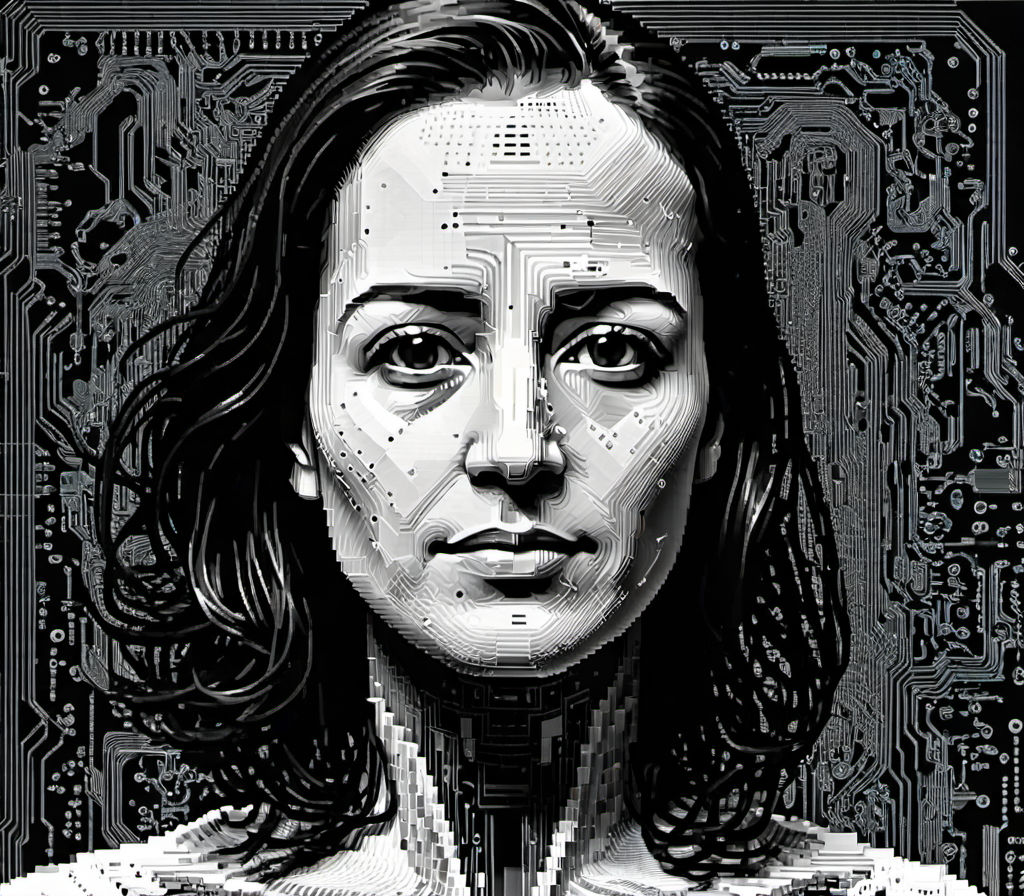This post was generated by an LLM
Listen
Creating a self-portrait in ASCII art involves converting visual imagery into a grid of characters, leveraging their varying densities and shapes to simulate shading and detail. While AI models like ChatGPT cannot generate traditional self-portraits directly, they can be prompted to produce ASCII art representations using text-based symbols. Below is a technical breakdown of the process, supported by context from the provided sources:
Understanding ASCII Art and Its Technical Foundations
ASCII art uses characters from the ASCII (American Standard Code for Information Interchange) table—such as @, #, *, -, and spaces—to create images. The key principle lies in mapping pixel brightness to character density: darker areas use denser characters (e.g., @), while lighter areas use sparser ones (e.g., .) [4].
To generate an ASCII self-portrait, the following steps are typically involved:
- Image Capture: A photograph or digital image of the subject is required.
- Image Scaling: The image is scaled down to reduce resolution, as each ASCII character represents a block of pixels. For example, a common approach is to map each character to a 21×8 pixel grid, simplifying the image into a manageable matrix [9].
- Grayscale Conversion: The image is converted to grayscale to eliminate color complexity, focusing on luminance values for shading.
- Character Mapping: Each pixel’s brightness value is mapped to a corresponding ASCII character, with a predefined gradient (e.g.,
@for black,#for dark gray,.for white).
AI-Generated ASCII Art: Challenges and Workarounds
While AI models like ChatGPT lack the capability to generate traditional self-portraits, they can be prompted to create ASCII art using text-based symbols. For instance:
- Prompt Engineering: Users have successfully asked models like ChatGPT to “create a self-portrait using ASCII art” or “generate an abstract ASCII representation of a self-portrait” [7][14]. These prompts bypass the model’s inability to produce visual images directly by focusing on text-based outputs.
- Limitations: Early versions of AI models struggled with this task, requiring manual intervention or creative prompting to achieve results [7]. However, advanced models like GTP-4 have demonstrated improved capabilities in generating abstract ASCII representations, though they may not replicate detailed facial features [6].
Tools and Techniques for Manual Creation
For those creating ASCII art manually, several tools and methods are available:
- Online ASCII Generators: Platforms like the “ASCII Art Generator” allow users to upload images and automatically convert them into ASCII art, adjusting parameters like character set and resolution [10].
- Programming Libraries: Tools such as Python’s
PIL(Pillow) library enable custom ASCII art generation by manipulating pixel data and mapping it to characters [9]. - SwiftUI and Code-Based Approaches: Developers have used frameworks like SwiftUI to create ASCII art from shapes, demonstrating how code can be leveraged to generate structured text-based images [11].
Examples and Community Contributions
The ASCII art community has produced numerous self-portraits, often shared on platforms like DeviantArt. For example, one artist noted that their ASCII self-portrait was well-received, highlighting the medium’s appeal for creative expression [12]. Additionally, experiments with AI models have yielded abstract ASCII outputs, such as GTP-4’s “abstract ASCII representation of a self-portrait,” which captures conceptual traits rather than literal imagery [6].
Conclusion
While AI models cannot directly generate photorealistic self-portraits in ASCII art, they can be guided to produce symbolic or abstract representations using text-based characters. The process relies on a combination of image processing techniques, manual or automated scaling, and creative prompting. For technical precision, tools like online generators or programming libraries remain invaluable, while AI serves as a novel, albeit imperfect, aid in exploring this unique art form.
For further exploration, experimenting with prompts like “create a self-portrait using ASCII art” and leveraging tools such as the ASCII Art Generator [10] can yield compelling results.
https://www.asciiart.eu/ascii-artists
https://substack.com/home/post/p-156913539
https://johansalo.medium.com/artistic-collaboration-between-chatgpt-and-midjourney-visualizing-an-ai-model-2bba20525d59
https://asciieverything.com/ascii-tips/ascii-portraits-capturing-personality-with-text/
https://www.linkedin.com/posts/jules-white-5717655_i-got-chatgpt-to-draw-a-self-portrait-in-activity-7035045251975172096-dr-i
https://www.linkedin.com/posts/duncannimmo_a-meaningless-but-fun-gtp-4-exercise-can-activity-7115438532130705409-l6XY
https://medium.com/mlearning-ai/artistic-collaboration-between-chatgpt-and-midjourney-visualizing-an-ai-model-2bba20525d59
https://emojicombos.com/self–portrait-ascii-art
https://stackoverflow.com/questions/56100461/how-to-draw-an-image-using-ascii-symbols
https://www.meridianoutpost.com/resources/etools/calculators/generator-ascii-art.php
https://medium.com/better-programming/code-your-own-ascii-art-with-swiftui-bf76bb8cfe83
https://www.deviantart.com/nemoorange/art/ASCII-Self-Portrait-12424225
https://www.wikihow.com/Create-ASCII-Art
https://andrekramermsc.substack.com/p/ai-draw-a-self-portrait-using-ascii
https://www.youtube.com/watch
This post has been uploaded to share ideas an explanations to questions I might have, relating to no specific topics in particular. It may not be factually accurate and I may not endorse or agree with the topic or explanation – please contact me if you would like any content taken down and I will comply to all reasonable requests made in good faith.
– Dan

Leave a Reply